- Submit a Protocol
- Receive Our Alerts
- Log in
- /
- Sign up
- My Bio Page
- Edit My Profile
- Change Password
- Log Out
- EN
- EN - English
- CN - 中文
- Protocols
- Articles and Issues
- For Authors
- About
- Become a Reviewer
- EN - English
- CN - 中文
- Home
- Protocols
- Articles and Issues
- For Authors
- About
- Become a Reviewer
Effective Hand Rearing of Neonatal Mice for Developmental Studies
Published: Vol 13, Iss 11, Jun 5, 2023 DOI: 10.21769/BioProtoc.4755 Views: 2172
Reviewed by: Pengpeng LiMatthew GrubbAnonymous reviewer(s)

Protocol Collections
Comprehensive collections of detailed, peer-reviewed protocols focusing on specific topics
Related protocols
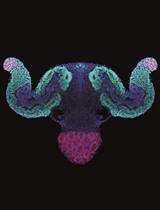
A New Approach to Generate Gastruloids to Develop Anterior Neural Tissues
Mehmet Girgin [...] Matthias Lutolf
Jul 20, 2023 2950 Views
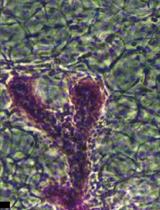
Development of the Mammary Gland in Mouse: A Whole-Mount Microscopic Analysis
Bo Wang [...] Peijun Liu
Oct 20, 2024 1969 Views
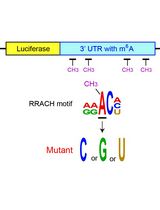
Examining the Roles of m6A Sites in mRNA Using the Luciferase Gene Fused With Mutated RRACH Motifs
Nobuko Katoku-Kikyo and Nobuaki Kikyo
Nov 5, 2025 1833 Views
Abstract
Chronic manipulation in neonatal mice is a technical challenge, but it can achieve greater insights into how mice develop immediately after birth. However, these manipulations can often result in maternal rejection and consequently serious malnourishment and occasional death. Here, we describe a method to effectively hand rear mice to develop normally during the first post-natal week. In our experiments, we were able to negate the feeding deficiencies of anosmic mutant mice when compared to littermate controls. As a result, the delayed neuronal remodeling seen in maternally reared mutant mice was not seen in the hand-reared mutant mice. This methodology is user intensive but can be useful for a broad range of studies either requiring many interventions or one intervention that can result in maternal rejection or being outcompeted by healthy littermates.
Keywords: NeonatalBackground
The common use of neonatal mice in developmental studies can result in maternal rejection (or even, in some circumstances, cannibalization) after experimental or genetic manipulations. In other situations, neonatal mice may be unable to suckle on their own; for example, anosmic mutant mice face severe difficulties in their suckling behavior (Brunet et al., 1996; Fujimoto, et al., 2023). These difficulties make it hard to determine whether altered development is due to the manipulation or simply due to a lack of maternal feeding.
In these cases, it is often necessary to hand rear the pups to prevent any difficulties. Successful hand rearing is dependent on more than simply delivering sufficient nutrients. For example, nesting conditions can have an influence on thermal stress and postnatal development (Gaskill et al., 2012; Mason et al., 2018). However, the majority of previous attempts have focused on nutrient delivery. To this end, a variety of techniques have been employed, such as force feeding with a syringe (Pleasants, 1959; Hoshiba, 2004) or directly adding nutrients to the stomach via a gavage (Messer et al., 1969; Hall, 1975). However, these methods were either only partially effective or technically difficult, which resulted in unreliable results or a low success rate. Additionally, varying the type of milk only produced worse results (Smart et al., 1984; Tonkiss et al., 1987).
Could a combination of improving the environmental conditions, feeding techniques, and neonatal care result in more effective and reliable growth of pups? There is a wide array of non-academic advice on how to rear mice (Creek Valley Critters, https://www.youtube.com/user/CreekValleyCritters), and we sought to harness this knowledge and apply it to biological research (Fujimoto et al., 2023). We discovered that the key features for successful growth were warm temperatures, regular feeding every two hours, and belly massages to avoid bloating. While this technique is manually very intensive, it produces pups that are healthy, and it does not require technically difficult procedures.
Materials and reagents
All the materials and reagents for hand rearing are shown in Figure 1.
Pipettes (Gilson, catalog numbers: P200 and P1000)
1.5 mL Eppendorf tubes (Bio-bik, catalog number: CF-0150)
Needles for injection (29 G) (BD, catalog number: 326666)
Paintbrush (Tokyu Hands, round No. 1)
Cotton buds
Tissue paper for nesting material
Cardboard box as a cage (W 16 cm × D 16 cm × H 6 cm)
Warm water (for cleaning pups)
Saline (Otsuka, catalog number: 3311401A7028)
70% ethanol
Powdered dog milk (PetAG, Ebsilac) (see Recipes)
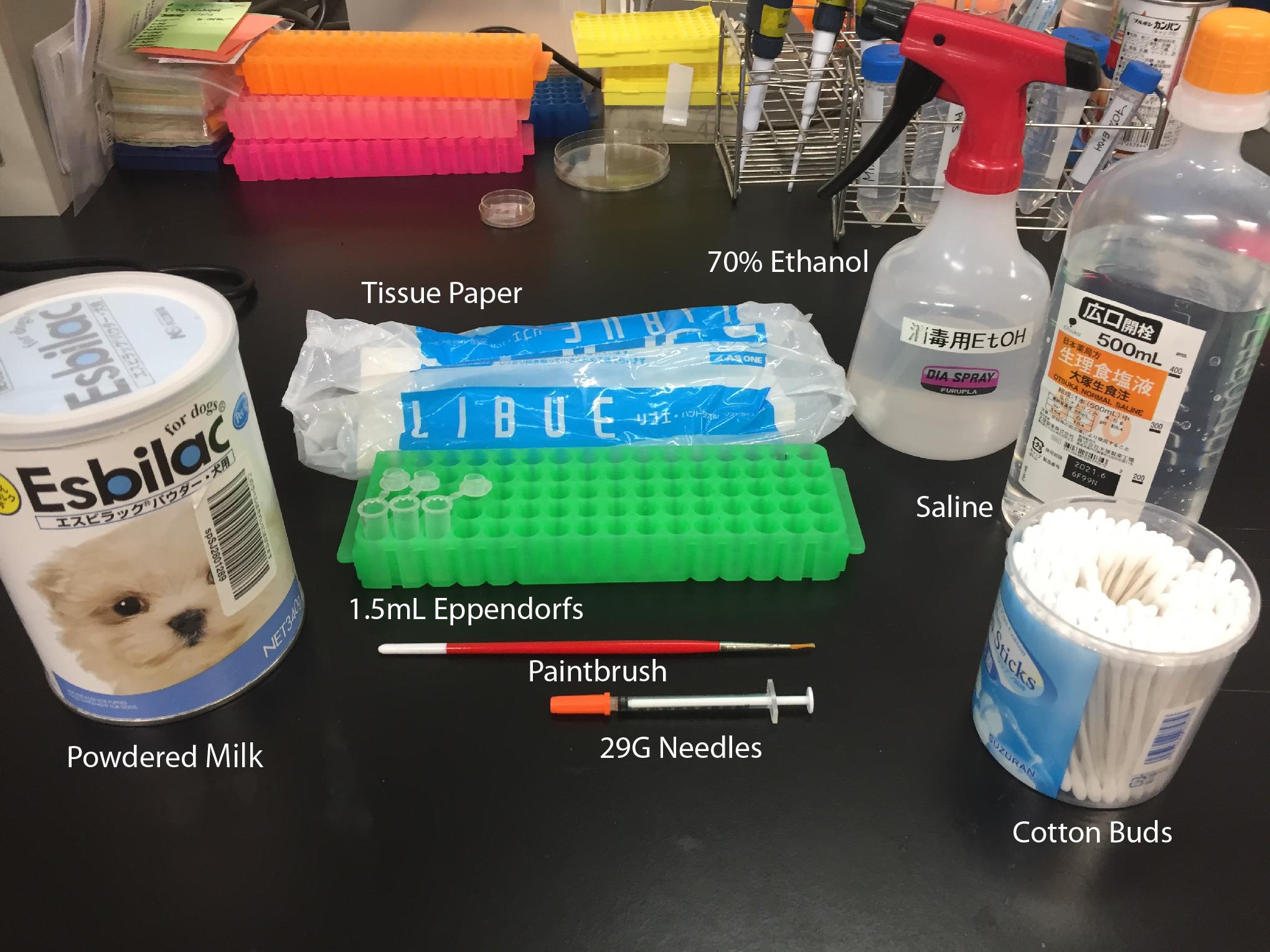
Figure 1. Materials required for hand rearing pups
Equipment
All equipment items for hand rearing are shown in Figure 2.
Warm hood (W 60 cm × D 50 cm × H 52 cm) (As One, Pasaurina Glove Box with outlet, model: AS-600SC, https://www.axel-gl.com/en/asone/d/3-4041-03/)
Note: Most chambers should be adequate, provided they are able to maintain a warm and stable environment that can also be easily cleaned.
Heat mat (Natsume, model: KN-475-3-40)
Temperature monitor (As One, model: A-230-W)
Pet heater (Marukan, model: HD-40c)
Thermostat (Marukan, model: HD-1)
Dry bath incubator (Major science, model: MD-02N) or water bath (Sansyo, model: SWS-181D)
Electronic scale (A&D company, model: HT-120)
Pipettes (Gilson, catalog numbers: P200 and P1000)
Ultraviolet lamp
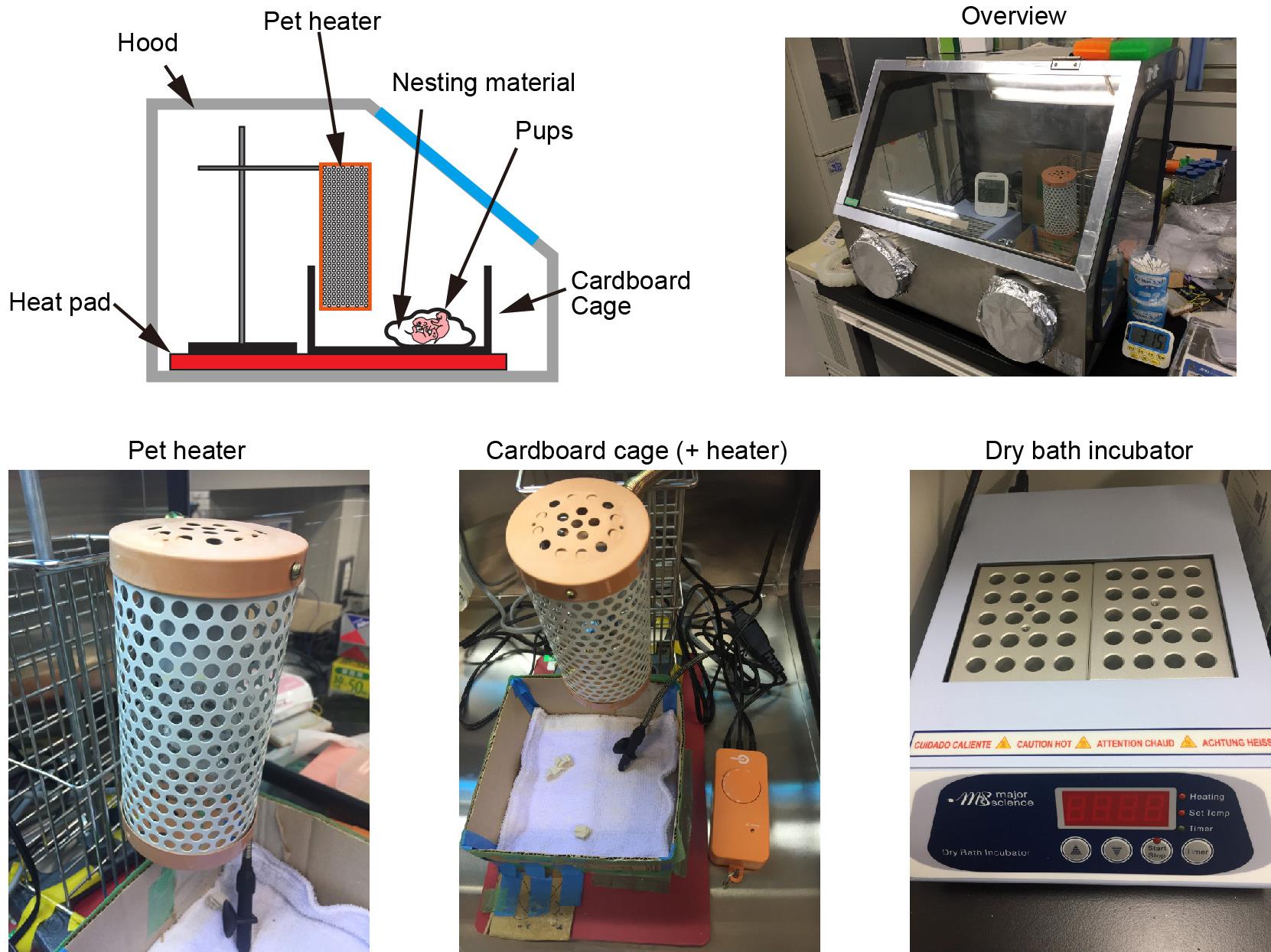
Figure 2. Schematic and photo of the hand rearing chamber
Procedure
Sterilize the hood 24 h prior to the experiment.
Note: Use the built-in UV light and 70% ethanol in order to prevent infections during the hand rearing period.
Prepare powdered dog milk in 1.5 mL tubes (see Recipes).
Prewarm the chamber to ~30 °C by turning on the heat pad and pet heater.
Note: The temperature probe should be placed in the cardboard box where the mice will be located.
Turn on the dry bath incubator or water bath and set it to 37 °C.
Note: Place the milk required for the first feeding session as well as saline (for intraperitoneal injections if the pups become dehydrated) and water (used as a saliva substitute; see step 8) into the dry bath incubator or water bath ~10 min before use.
Provide nesting material.
Note: Two to three sheets of tissue paper torn into strips should suffice. Autoclaving the nesting materials is not necessary for successful rearing, but you should follow the regulations of the specific mouse facility and/or laboratory.
Select up to three pups to hand rear.
Notes:
One person can take care of up to three pups at the same period. It is recommended to avoid using the runt of the litter as they tend to not feed so well.
Leave some pups behind with the dam to compare growth rates with those that are hand reared.
Prior to touching the hand-reared pups at any time, make sure your hands are clean. This is to prevent infection; usually we clean our hands with 70% ethanol. Skin-to-skin contact seems to be beneficial for the pups, as it helps to reduce heat loss without gloves; however, follow the regulations for mouse handling of the mouse facility and/or the laboratory.
It is advisable to hand rear more than one pup, in order to allow them to nest together and use their body warmth to warm each other.
Our experiments began from P1; however, it is possible to rear pups immediately from birth.
Weigh pups prior to starting the experiment.
Notes:
Use a scale that is at least sensitive to 0.01 g.
In our experiments, we weighed mice every 12 h to check if the weight gain was sufficient.
Clean the pup prior to feeding.
Steps 8–12 should be performed in the warm hood. Pups should not leave the hood except when performing weight checks.
Clean hands with 70% ethanol.
Notes:
i. Warm your hands with the pet heater to as close to the ambient temperature as possible.
ii. Neonatal mice are small and can lose body heat very quickly. Having warm hands prevents this.
Dip a cotton bud in water at 37 °C (heated in a 1.5 mL tube in the water bath).
Gently clean the genital region with the cotton bud.
Remove any fecal material.
Notes:
i. The fecal material should be a yellow-orange color; if the color of the feces changes to black, it indicates that there may be internal bleeding.
ii. Do not be surprised if the pup begins to urinate.
Use a new cotton bud to clean the face, whiskers, and rest of the body.
Note: Dried milk can occasionally get stuck between the fingers and toes of the pup and fuse them together. To prevent infections, it is best to remove this.
Using the paintbrush, feed the pup with the required volume of milk (100 μL/g body weight).
Prior to feeding, aliquot the volume required (100 μL/g body weight) into a new 1.5 mL tube and preheat in the dry bath incubator or the water bath so it reaches 37 °C before feeding.
Dip the paintbrush into the milk and carefully place the tip of the brush just inside the mouth of the pup (see Video 1).
Notes:
i. The first several sessions may take some time, as the pup begins to learn how to suckle from the paintbrush.
ii. If milk begins to flow out from the nostrils, stop feeding and clean the pup. It can either indicate that the pup is full or is drinking too quickly.
1) If this is the case, turn the pup upside down to aid the flow out through the nostril and remove as much milk as possible with a cotton bud.
2) If the pup still suckles, continue feeding slowly.
Continue feeding until the milk in the 1.5 mL tube from step 9a is finished or if 30 min of feeding time have elapsed. The stomach should now be white and clearly visible.
Video 1. Feeding procedure. See step 9 for details.
Using a new cotton bud soaked in warm water, clean the pup until milk and dry skin are removed, mimicking the licking behavior that dams exhibit for their pups.
Massage the stomach of the pups to prevent bloating (see Video 2).
Notes:
Repeated gentle downward movements can often help in this process.
Bloating can be seen by either the presence of a swollen abdomen or several dark spots (air pockets) within the stomach (normally white when filled with milk).
i. In case of bloating, attempt to remove the air pockets from the stomach by increased massages.
ii. If the abdomen appears to be bloated and firm, and massaging with the cotton bud does not aid the process, a stronger form of massage may be necessary. Place the pup on the heating pad with the ventral side in contact with the pad (see Video 3). Gently hold and push down on the abdomen and begin to massage the abdomen in a circular manner. In extreme cases, approximately 10 min of massaging may be necessary to remove the blockages in the digestive system. A successful massage should result in urination and excretion from the pup in question.
Video 2. Massage and excretion. See steps 9, 10, and 11 for details.Video 3. Robust massage and excretion. See step 11b.ii.
Return the pup to the nest in the cardboard box.
Notes:
Once finished, return the pup to the nesting material.
The other pups can be maintained in the cardboard cage until they are ready to be fed. Allow the pups to nest together to warm each other.
Repeat steps 8–12 for the other pups. Steps 8–12 typically take 30 min per pup.
Clean the paintbrush by washing out the milk with water and then spraying with 70% ethanol and leave to dry.
Prepare the milk for the next feeding session.
Notes:
If the pups are easily able to finish the allocated milk, it may be necessary to increase the quantity of milk provided.
Conversely, if the pup is bloated it may be best to either reduce the quantity of milk or skip one feeding session to focus on the massages to remove the bloating.
Begin the feeding and cleaning process again two hours after starting (see Figure 3).
Continue the schedule every two hours until P6 or your desired time point. We only have experience with up to P6. Note that circadian rhythms are not apparent until ~P10. As manual feeding will be very laborious (1.5 h feeding for three pups and 0.5 h break, 12 cycles a day), it is almost impossible to do with only one person. Feeding should be performed in shifts with at least two people.
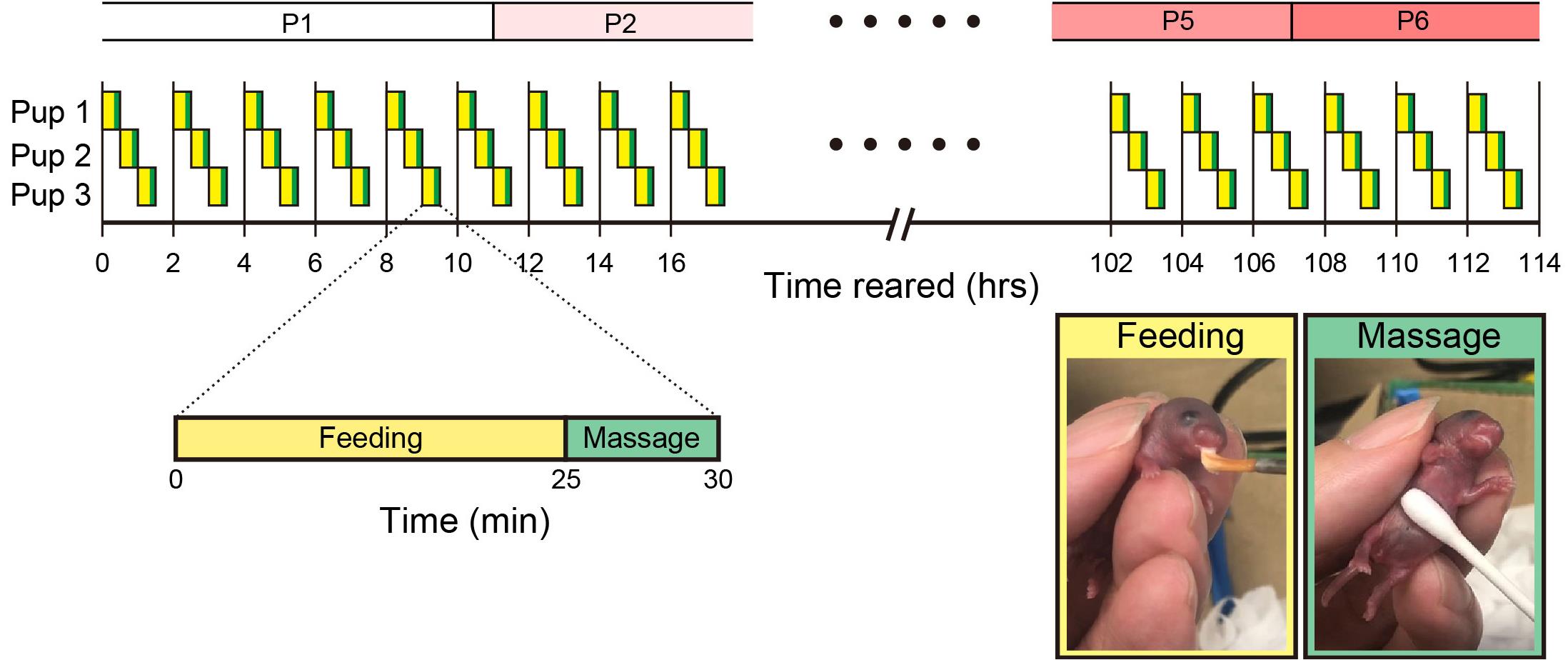
Figure 3. Schedule for hand rearing pups from P1 to P6
Data analysis
Measure the weight using an electronic scale every 12 h. Figure 4 shows one of our examples. Data analysis has been described in the original publication (Fujimoto et al., 2023).
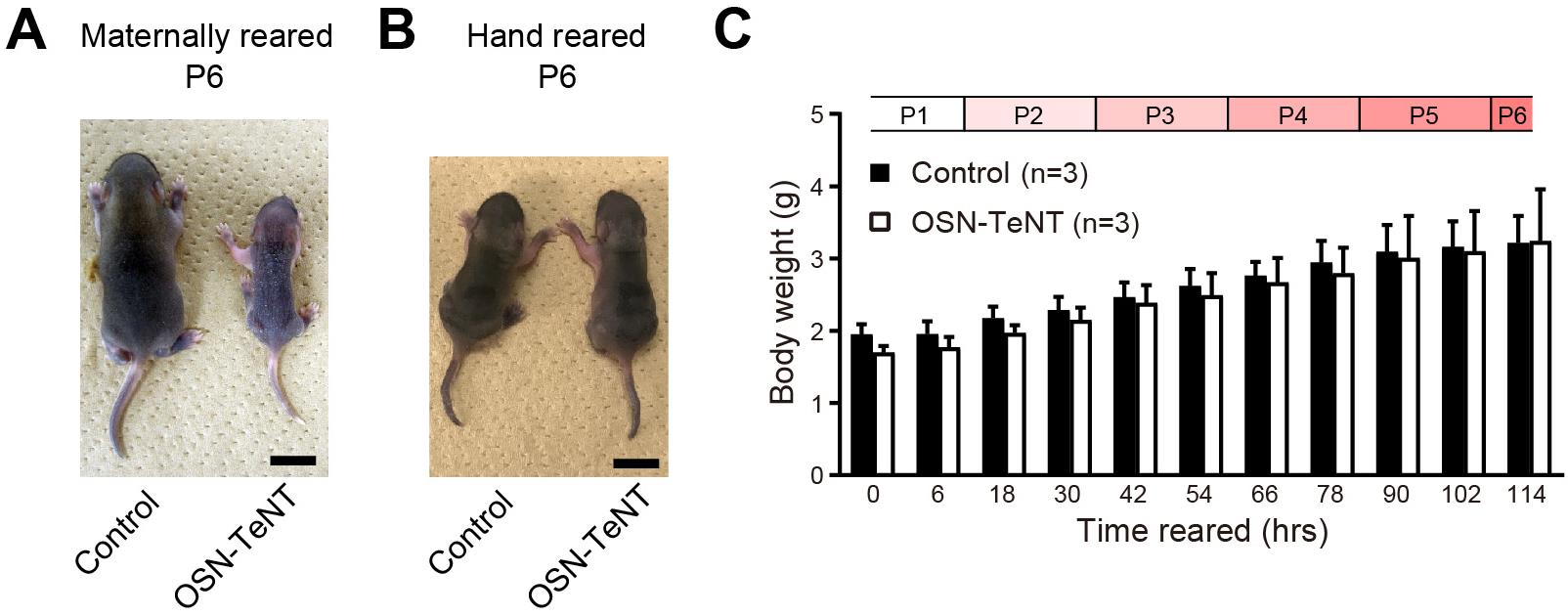
Figure 4. Rescuing anosmic mutant mice from growth defects (Fujimoto et al., 2023). Olfactory sensory neuron-specific tetanus toxin light chain mice (OSN-TeNT, OMP-Cre;R26-CAG-LoxP-TeNT) were used. OSN-TeNT mice are anosmic, because neurotransmission from OSNs is blocked. A. Differences in development can clearly be seen when both pups are maternally reared. B. After using our hand-rearing protocol, no differences were visible between the two groups. C. Timeline depicting the weight changes during hand rearing. See Fujimoto et al. (2023) for more details. Scale bars: 10 mm.
Notes
Handling: initially, pups will be nervous as they are unused to being handled. During the first 24 h, provide as much exposure as possible. Additionally, the temperature of the experimenters’ hands is important. We suggest warming them up on the pet heater prior to handling but after cleaning.
Feeding: pups will take a while to learn how to suckle from the paintbrush; be patient. Additionally, different pups will prefer different feeding positions.
Bloating: feeding the pups vertically appears to increase the likelihood of bloating. It is recommended that you feed the pups while they are on their back or on their abdomen.
Dehydration: dehydration can be detected by the transparency of the skin. The greater the transparency, the greater the state of dehydration. We recommend delivering 10 μL of saline subcutaneously every two hours until the pup improves.
Weight gain: when comparing with maternally reared littermate controls, it is worth noting that the weight of the hand-reared pups is still lower (50%–90% at P6 in our examples). This may indicate that hand rearing cannot fully rescue the mice from growth defects. It should also be considered that the mother from whom the pups have been taken has now fewer pups to care for, and thus their growth may be higher than in a truly separate control case. Thus, the maternally reared littermates may not be appropriate controls. Hand-reared wild-type mice should be used as a control for hand-reared mutant mice.
Recipes
Powdered dog milk
Use 9 g of powdered milk per 30 mL of warm tap water. Do not use deionized water, as the ions are needed for correct development
Note: To help dissolve the powder, it is recommended to use a 50 mL centrifuge tube and then vortex the content until the powder is fully dissolved. We did not filter sterilize the milk, but you can if it is a requirement from the regulation of the mouse facility/laboratory.
Aliquot 1 mL of liquid into a 1.5 mL tube.
Note: Repeat until the centrifuge tube is empty.
Store aliquots at 4 °C for up to one week.
Note: If you need to store the milk for longer, store at -20 °C for up to 1–2 months. However, it is recommended to prepare fresh solutions when needed.
Acknowledgments
This work was supported by grants from the PRESTO program of the Japan Science and Technology Agency (JST) (T.I.), the JSPS KAKENHI (23680038, 15H05572, 15K14336, 16K14568, 16H06456, and 17H06261 to T.I., 15K14327 and 17K14944 to S.F., 17K14946 to M.N.L.), Sumitomo Foundation (T.I.), Nakajima Foundation (T.I.), and RIKEN CDB intramural grant (T.I.).
The procedures described here were based on the advice from the YouTube channel Creek Valley Critters (https://www.youtube.com/user/CreekValleyCritters) with some modifications by our hands. This YouTube channel contains additional useful information regarding hand rearing.
This protocol has been used in our research work (Fujimoto et al., 2023).
Competing interests
There are no conflicts of interest or competing interests.
Ethics
All animal experiments were approved by the Institutional Animal Care and Use Committee (IACUC) of the RIKEN Kobe Branch and Kyushu University. Both males and females were used for our experiments.
References
- Brunet, L. J., Gold, G. H., and Ngai, J. (1996). General anosmia caused by a targeted disruption of the mouse olfactory cyclic nucleotide-gated cation channel. Neuron 17(4): 681–693.
- Fujimoto, S., Leiwe, M. N., Aihara, S., Sakaguchi, R., Muroyama, Y., Kobayakawa, R., Kobayakawa, K., Saito, T. and Imai, T. (2023). Activity-dependent local protection and lateral inhibition control synaptic competition in developing mitral cells in mice. Dev Cell doi: https://doi.org/10.1016/j.devcel.2023.05.004
- Gaskill, B. N., Gordon, C. J., Pajor, E. A., Lucas, J. R., Davis, J. K. and Garner, J. P. (2012). Heat or insulation: behavioral titration of mouse preference for warmth or access to a nest. PLoS One 7(3): e32799.
- Hall, W. G. (1975). Weaning and growth of artificially reared rats. Science 190(4221): 1313–1315.
- Hoshiba, J. (2004). Method for hand-feeding mouse pups with nursing bottles. Contemp. Top Lab Anim. Sci. 43(3): 50–53.
- Mason, B., Rollins, L. G., Asumadu, E., Cange, C., Walton, N. and Donaldson, S. T. (2018). Nesting environment provides sex-specific neuroprotection in a rat model of neonatal hypoxic-ischemic injury. Front. Behav. Neurosci. 12: 221.
- Messer, M., Thoman, E. B., Galofre, A., Dallman, T. and Dallman, P. R. (1969). Artificial feeding of infant rats by continuous gastric infusion.J. Nutr. 98(4): 404–410.
- Pleasants, J. R. (1959). Rearing germfree cesarean-born rats, mice, and rabbits through weaning. Ann. N. Y. Acad. Sci. 78: 116–126.
- Smart, J. L., Stephens, D. N., Tonkiss, J., Auestad, N. S. and Edmond, J. (1984). Growth and development of rats artificially reared on different milk-substitutes. Br. J. Nutr. 52(2): 227–237.
- Tonkiss, J., Smart, J. L. and Massey, R. F. (1987). Growth and development of rats artificially reared on rats' milk or rats' milk/milk-substitute combinations. Br. J. Nutr. 57(1): 3–11.
Article Information
Copyright
© 2023 The Authors; exclusive licensee Bio-protocol LLC.
How to cite
Marcus, L. N., Takeshi, I. and Imai, T. (2023). Effective Hand Rearing of Neonatal Mice for Developmental Studies. Bio-protocol 13(11): e4755. DOI: 10.21769/BioProtoc.4755.
Category
Neuroscience > Development > Morphogenesis
Developmental Biology > Morphogenesis > Organogenesis
Do you have any questions about this protocol?
Post your question to gather feedback from the community. We will also invite the authors of this article to respond.
Share
Bluesky
X
Copy link









